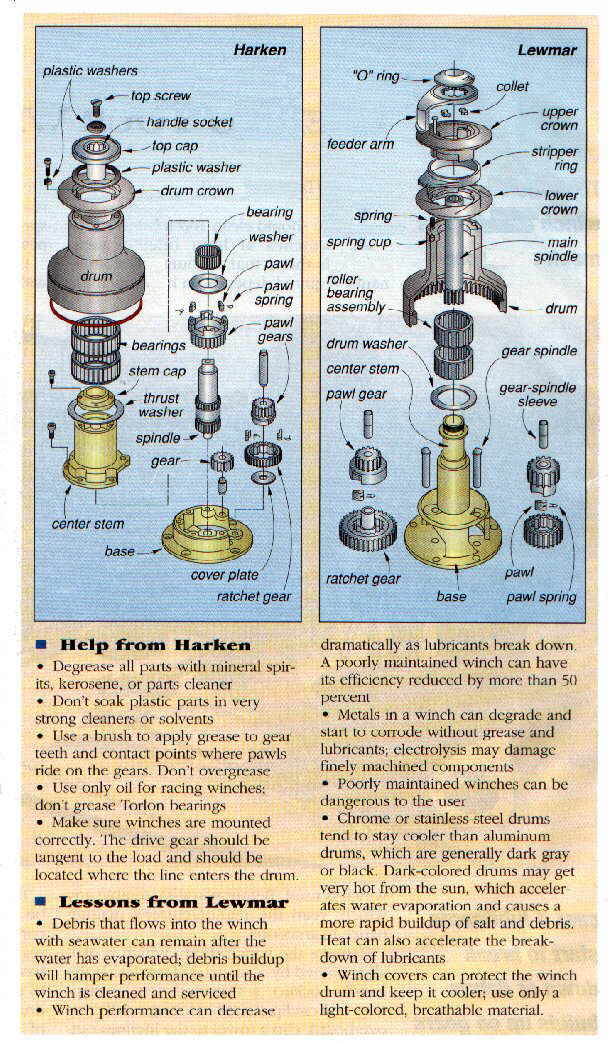Winch Service Manual for Barlow Winches
Winch Maintenance
|
You should clean and lubricate your winches at least once a year, although the actual amount of maintenance required depends on how much the winch is used. Before you disassemble any winch, read the manufacturer's maintenance manual. Remove the winch drum, which is usually retained by a screw(s) (look inside the handle socket), a threaded ring, a snap-ring, or a circlip. To avoid losing small parts overboard, clip a towel to the lifelines outboard of the winch you are servicing. Spread a second towel on deck on which to lay out the winch's individual parts. Lift up the drum carefully; bearings and pawls may come up with it. Disassemble the winch components, and place them on the towel in the proper sequence for reassembly. Note how the pawls and springs fit and the correct way to face the pawl. It's a good idea to make a sketch. If the winch components aren't caked with grease, wipe them clean with a lint free cloth and WD-40 or a similar lubricant. Heavily caked parts should be soaked in kerosene or solvent. When all the parts are clean and dry, lightly coat the bearings and gears with Teflon grease. Don't grease the pawls and ratchet teeth; lubricate them with machine oil instead. Never allow lubricants to touch the brake surfaces of a reel winch. Reassemble the parts of the winch in the order specified by the manufacturer. Never use force to reassemble a winch; if the parts don't slip together easily, stop immediately, as something may be positioned incorrectly. If the winch contains any aluminum components, coat all fastener threads with an anti-seize compound. If you are working on a self-tailing winch, be sure to attach the stripper arm in the correct position. When the winch has been reassembled and the retaining devices have been tightened, spin the winch drum to make sure it turns freely. Then turn the drum slowly and listen for the solid click of the pawls. Insert the winch handle, crank it, and listen to the pawls again. Unless you use your winches in a racing situation and you're doing a lot of cruising, a good freshwater rinse at the end of each sailing day may be all the additional maintenance your winches will need for the season. But if you notice that the winch drums are getting sluggish, you will probably need to reservice your winches again. |

NOTICE: Some pages have affiliate links to Amazon. As an Amazon Associate, I earn from qualifying purchases. Please read website Cookie, Privacy, and Disclamers by clicking HERE. To contact me click HERE. For my YouTube page click HERE